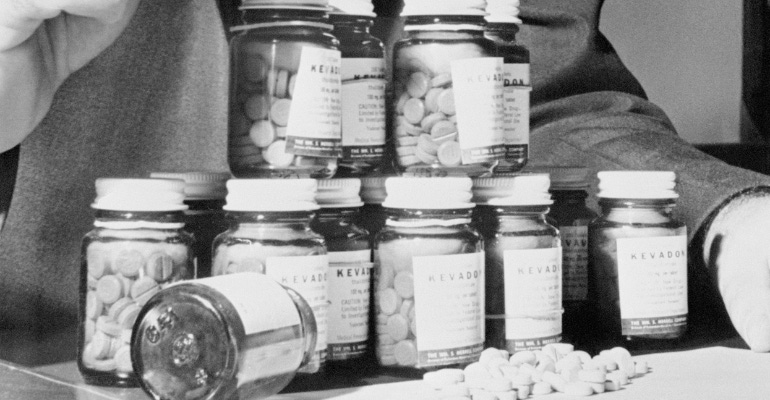The Tragedy That Stalled Medical Device Regulation
Trivia Tuesday: What global tragedy forced Congress to put medical device regulation on the back burner in 1962?
February 7, 2023

The Medical Device Amendments of 1976 were supposed to be written up and put into law in the early 1960s. But, as Peter Barton Hutt told MD+DI in a 1996 interview about the development of the Medical Device Amendments, Congress got sidetracked by the thalidomide tragedy.
Thalidomide was a widely used drug in the late 1950s and early 1960s for the treatment of nausea in pregnant women. It became apparent in the 1960s that thalidomide treatment resulted in severe birth defects in thousands of children.
"Congress set aside the issue of medical devices at that point and focused solely on what ultimately became the Drug Amendments of 1962," Hutt said in the 1996 interview. "At that time, it was thought that Congress would return to medical devices the next year. As it turned out, it was 14 additional years before medical device legislation was considered by Congress."

Hutt explained that several things happened in those intervening years. First, the courts reuled that many medical devices could also be classified as drugs, thus imposing more stringent requirements on the medical device industry. And, in the late 1960s, a committee was organized and chaired by Ted Cooper, then head of the National Heart, Lung, and Blood Institute.
"The report of this committee recommended that any new legislation authorizing regulation of medical devices should be specifically targeted to the device industry and should not be like the regulation of new drugs," Hutt said. "The committee recommended creating different tiers of medical devices and tailoring the regulatory controls to the risk involved. For example, tongue depressors would just be under general controls of the types that exist today. Other devices, like artificial hearts, would go through premarket approval."
Hutt's role in the development of the Medical Device Amendments
Hutt left private practice in 1971 to become chief counsel for FDA, a position he held until 1975. One of the primary charges given Hutt at that time was to draft this legislation. At the time of the 1996 interview with MD+DI, he was a partner at Covington & Burling, a Washington, DC-based law firm, and an instructor of food and drug law at Harvard Law School.
"When I became FDA chief counsel in late 1971, the legislation was in draft form, but it had not yet been introduced into Congress," Hutt recalled. "Elliott Richardson, the secretary of Health, Education, and Welfare, and Charlie Edwards, the commissioner of food and drugs, charged me with getting it into final form, getting the other governmental agencies and departments to agree with it, and getting it introduced in Congress. I spent a great deal of time my first year getting others in the government to agree to the form of regulation that was to be included."
That draft legislation, which was introduced in 1972, attempted faithfully to carry out the recommendations of the Cooper committee report, Hutt said. It used different terminology for all of the critical regulatory aspects so that the standard for proof of effectiveness was different than for drugs. The regulatory requirements were purposely set out to be different as well, he said.
Hutt said the Senate focused on the draft legislation on a number of occasions, but the House did not.
"We in FDA then decided to force the issue on the House, and we set up the Bureau of Medical Devices even before the legislation was created," he said. "We also began to take an inventory of all medical devices, something the statute would require. And indeed we began to classify all medical devices into Classes I, II, and III. That finally got the attention of the House as well as the Senate, and they both began to show renewed interest in late 1974."
In late 1974 and early 1975, one of the most crucial events in the development of the Medical Device Amendments legislation took place.
"I and three others – one of them was the House legislative counsel who worked on FDA legislation – hammered out a revision of the draft legislation that would satisfy FDA policy while also accommodating some of the concerns of industry, as well as those of members of Congress," Hutt said.
That legislation was put in final form in early 1975, and it was basically that draft that ultimately captured the complete policy, he said. The Medical Device Amendments became law in 1976.
About the Author(s)
You May Also Like



